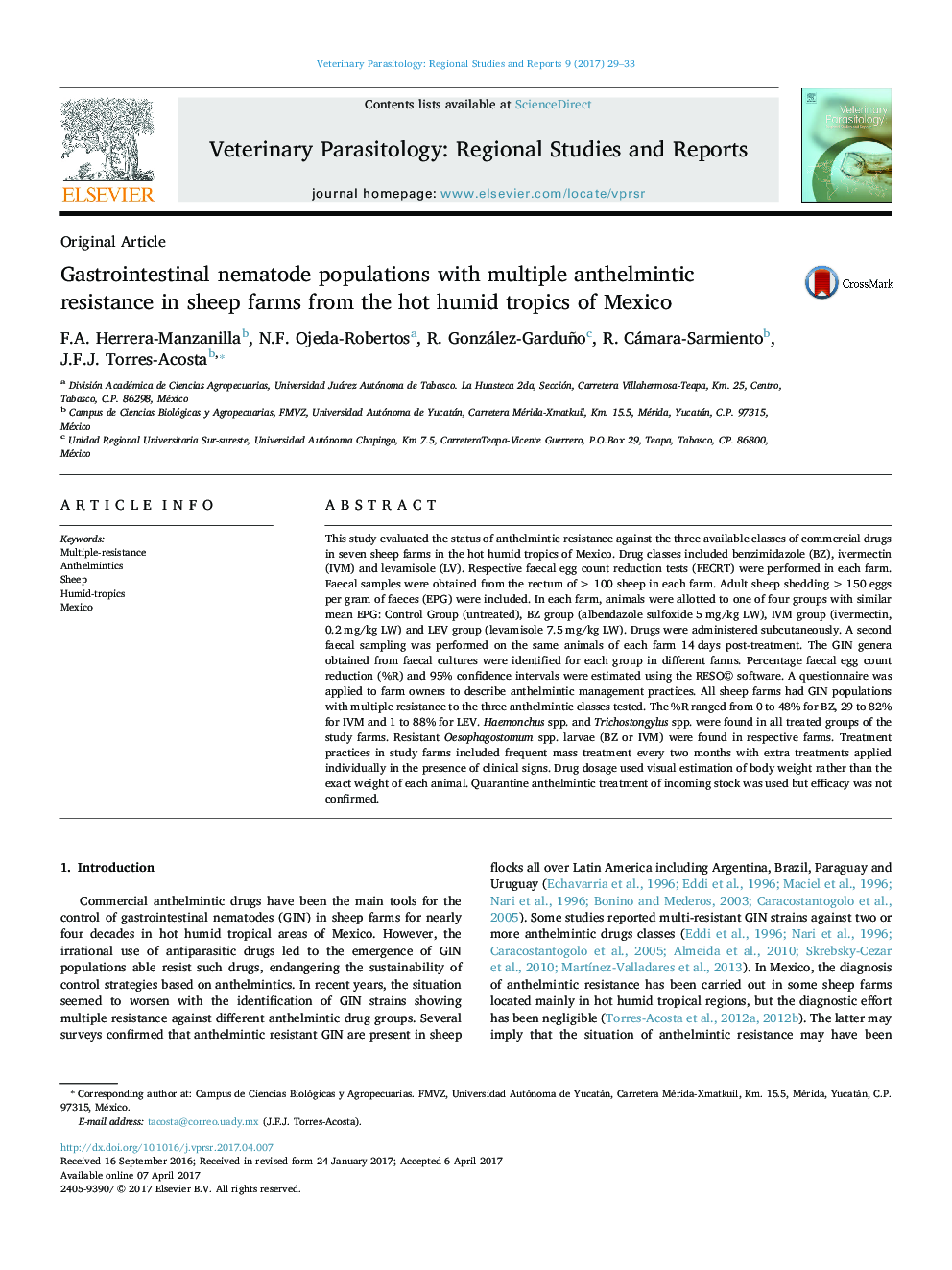| کد مقاله | کد نشریه | سال انتشار | مقاله انگلیسی | نسخه تمام متن |
|---|---|---|---|---|
| 5546009 | 1555865 | 2017 | 5 صفحه PDF | دانلود رایگان |
- Faecal egg count reduction tests were performed on 7 sheep farms in humid tropical Mexico.
- Gastrointestinal nematodes were resistant to benzimidazole, levamisole and Ivermectin in all farms.
- Haemonchus spp. and Trichostrongylus spp. were resistant to 3 anthelmintics classes in all farms.
- Total AH failure suggests that drug combinations and alternative control methods must be implemented.
This study evaluated the status of anthelmintic resistance against the three available classes of commercial drugs in seven sheep farms in the hot humid tropics of Mexico. Drug classes included benzimidazole (BZ), ivermectin (IVM) and levamisole (LV). Respective faecal egg count reduction tests (FECRT) were performed in each farm. Faecal samples were obtained from the rectum of >Â 100 sheep in each farm. Adult sheep shedding >Â 150 eggs per gram of faeces (EPG) were included. In each farm, animals were allotted to one of four groups with similar mean EPG: Control Group (untreated), BZ group (albendazole sulfoxide 5Â mg/kg LW), IVM group (ivermectin, 0.2Â mg/kg LW) and LEV group (levamisole 7.5Â mg/kg LW). Drugs were administered subcutaneously. A second faecal sampling was performed on the same animals of each farm 14Â days post-treatment. The GIN genera obtained from faecal cultures were identified for each group in different farms. Percentage faecal egg count reduction (%R) and 95% confidence intervals were estimated using the RESO© software. A questionnaire was applied to farm owners to describe anthelmintic management practices. All sheep farms had GIN populations with multiple resistance to the three anthelmintic classes tested. The %R ranged from 0 to 48% for BZ, 29 to 82% for IVM and 1 to 88% for LEV. Haemonchus spp. and Trichostongylus spp. were found in all treated groups of the study farms. Resistant Oesophagostomum spp. larvae (BZ or IVM) were found in respective farms. Treatment practices in study farms included frequent mass treatment every two months with extra treatments applied individually in the presence of clinical signs. Drug dosage used visual estimation of body weight rather than the exact weight of each animal. Quarantine anthelmintic treatment of incoming stock was used but efficacy was not confirmed.
Journal: Veterinary Parasitology: Regional Studies and Reports - Volume 9, August 2017, Pages 29-33
